Don't wanna be here? Send us removal request.
Text
Little Steps Do Matter

Being in Manila doesn’t put me at ease. There are always worries about earthquakes, fire, or even accidents, running on my mind 24/7.
Coming from the province of Rizal, and having to study in the University of Santo Tomas, I have to be apart from my mother, and she can’t help but always remind me to never forget to pray and pray, for accidents are unpredictable, and this year is marked with a lot of instances of earthquakes, especially with the case of Manila which is located near the West Valley Fault line.
Actually, it is not like I haven’t experienced alarming situations before. When I was in Grade 11, I was alone in our dormitory because there was a typhoon that time and my dorm mates, who are also from my province, and were just about to return, were left with no choice but to stay in their homes. Suddenly, the fire alarm of the dormitory rang and that immediately put me in panic, losing all the “mind-over-matter” techniques that I was taught to apply during those types of situations. Fortunately, according to the management, there was only an overheating of microwave oven of one of the tenants and there’s nothing to worry about. That was followed by instances of actual earthquakes when I was in Grade 12 and now in college, which always make me wonder about my preparedness for these kinds of disasters. Well not only mine, but the community as well.
Are we really prepared for different disasters?
Civic Welfare Training Service gave me an opportunity to have an interview with Barangay 471 secretary Rose Mae P. Lambanecio and have a glimpse of how they implement disaster and risk reduction for the welfare of their community.
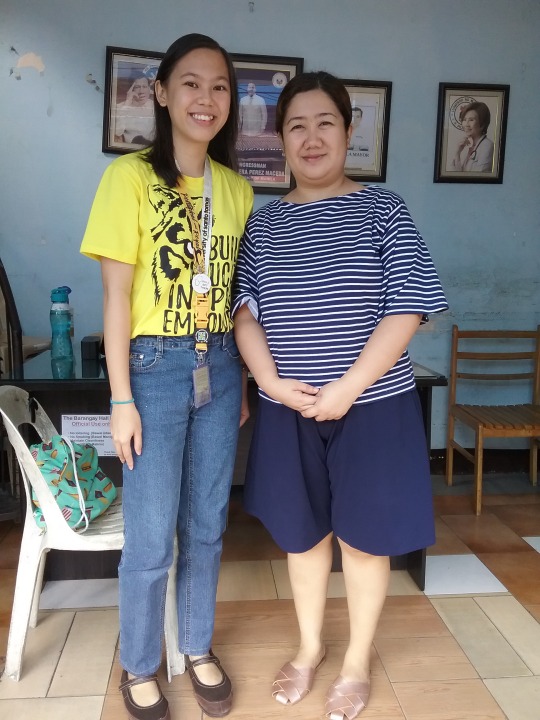
The streets are haven for those who have hearts which are always fervently craving for food as it were embedded with different establishments: from samgyupsal to tapa to unli-wings to dimsum, the list goes on. But, I learned from Ms. Lambanecio that this actually presents one of the hazards in the community. Because there are many restaurants, along with boarding houses as well, they cook a lot and this presents a fire hazard. In fact, Ms. Lambanecio mentioned a fire incident that happened in Antonio, last year, 2018. Not only that, but the place is also exposed to flood hazards as what happened in typhoon Ondoy and Pedring.
Because it is a must to be aware about the possible disasters that may struck the area, aside from tv or radio news, the secretary and the barangay chairman uses the application Pureforce, to connect with the responders in their barangay, the Raha volunteers, and ask for their aid during emergency situations. She also recommends the said application as it promotes convenience whenever someone is in need of fire truck, for instance, or an ambulance, or even police, during fires, earthquakes, or even typhoons.

Despite hearing how dangerous it can get in this area of Manila, I felt a bit more relieved when Ms. Lambanecio told me that we were lucky for floods only happen once every five years and fire also happens once in three to five years. As I moved to Manila for studying, I became already accustomed to the sirens of the fire truck that sometimes wake me up early in the morning or prevent me from sleeping late at night. With these, I thought fires are something that happens frequently within the community. But as I dig deeper, turns out that barangay 471 effectively manages the establishments around them to minimize disasters such as that.
According to her, they require establishments to have CCTV cameras, fire extinguishers, and grease traps, especially for restaurants. Grease traps serve as a measure not to only avoid fires, but also to avoid flooding since it collects on waterways when left to cool. These measures were used, knowing that Asturias St. and Rosarito St. have restaurants which are in great proximity with each other as well as in Juaning St. which have boarding houses side by side each other and are made of light materials– a situation that presents a high risk for fire.
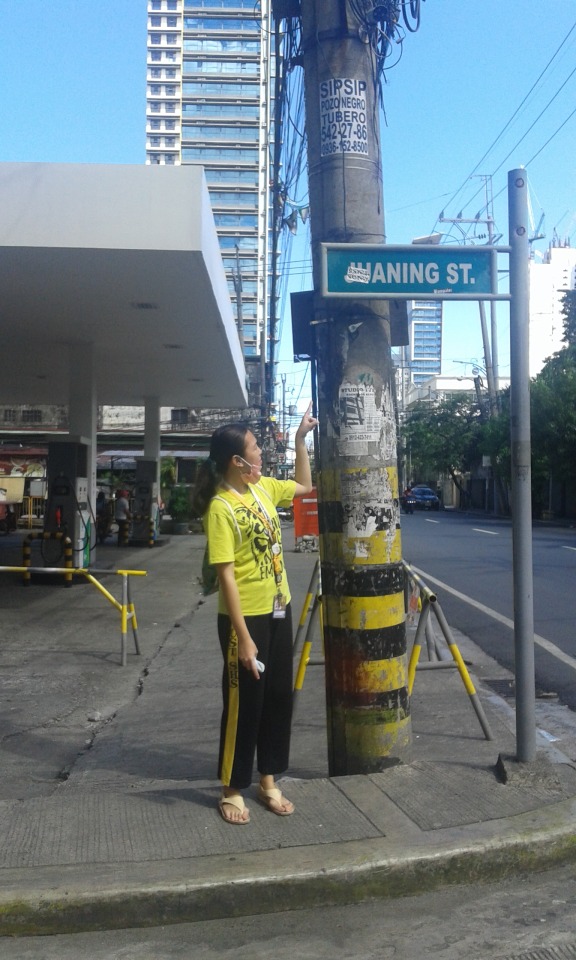
However, even though disasters seldom happen as the secretary had said, when they do, they really leave marks. As these disasters happen, their appliances and belongings are affected and become unusable. Loss of profit is also evident in restaurant owners.
With these, Ms. Lambanecio says the barangay have to do their part which is to be the first responders before fire trucks or other authorities can. They need to assist the residents in seeking other necessary help and ensure that they have a safe place to stay in during such incidents. They also facilitate the distribution of relief goods, financial needs, and shelter (especially in case of fire incidents), from the government and social services when needed, as they are the one who are capable of identifying and testifying the residents who really need help.
During earthquakes, I am glad for UST serves as an open space for people to seek safety. And when typhoons hit and fires happen, Ms. Lambanecio says that the second floor and third floor of their barangay hall is open for evacuees.

In contrast to this, she also identifies places like the Juaning St. and Rosarito St. where there are tall buildings that can pose a risk during earthquakes and this is further severed by the fact that the location is characterized by a narrow alley.
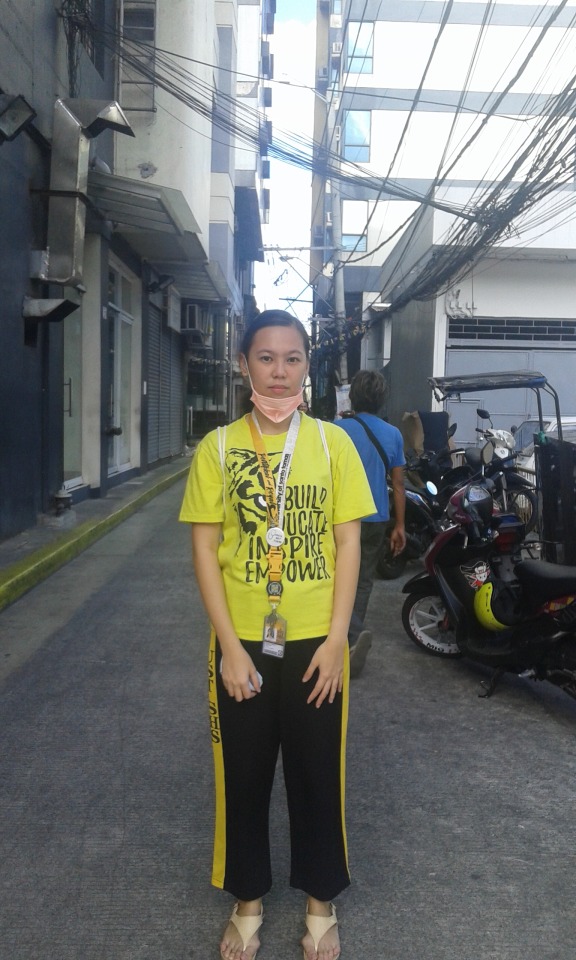
Because of how the secretary answers my questions comprehensively, I came to think that possibly, this barangay faces only few challenges in disaster and risk management. But as I inquired further, I realized that I forgot that there are other factors which serve as their challenges.
With a current population 1872 people, and is comprised greatly of students and workers who are not really residents of the area, they face difficulty in information dissemination. Ms. Lambanecio describes the people as “come and go” since some might only stay for months only, or weeks, or even just in the couple of days. The situation of the area is not suitable for one big meetings where they will raise awareness about preparedness. In response to this, their barangay officers must roam and monitor the residents to constantly remind them for their own sake. They also connect to the transient residents through the landlords and landladies of dormitories and boarding houses for they have the accessibility to identifying the other residents, and thus they can help the barangay in information dissemination.
Failing to plan is planning to fail that’s why for authorities like the barangay, they construct plans for proper response during calamities.

According to Ms. Lambanecio, it is important to have a vision and mission to determine their goals in developing their plans. They also identify the risks and hazards in the barangay and they assign focal persons to train, for their barangay must be quick in responding to disasters. In line with this, they have committees or disaster and risk management council. They also have equipment such as megaphone and public address system directed to different streets of the barangay which also aid them when they have to make important announcements.

The barangay also conducts de-clogging activities for the community in general and for requesting establishments, not only for the sake of cleanliness but also to prevent flooding.

For fires, the Raha volunteers are the one to respond and aside from fire trucks, they also have their ambulance to assist patients to the hospital.
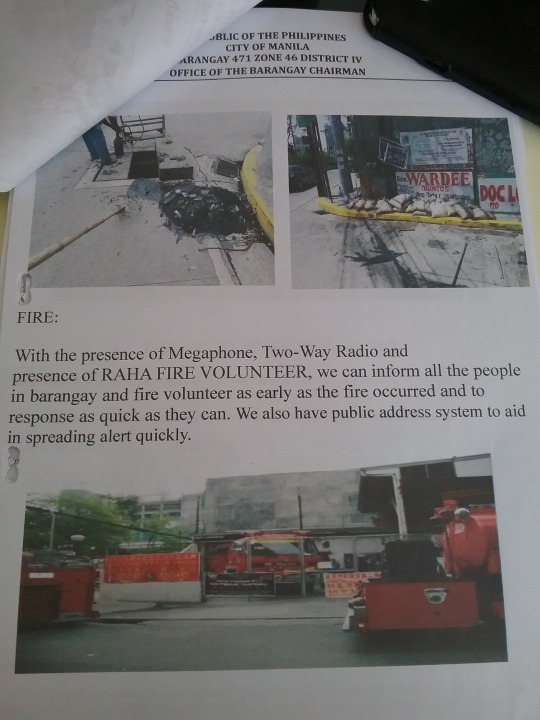
For police-related incidents, Ms. Lambanecio says they will be having an outpost to better facilitate it.
The barangay also allots financial assistance in their funds for victims of calamities, with sack of rice, canned goods and other necessities, and they also have first aid kits for medical-related concerns.
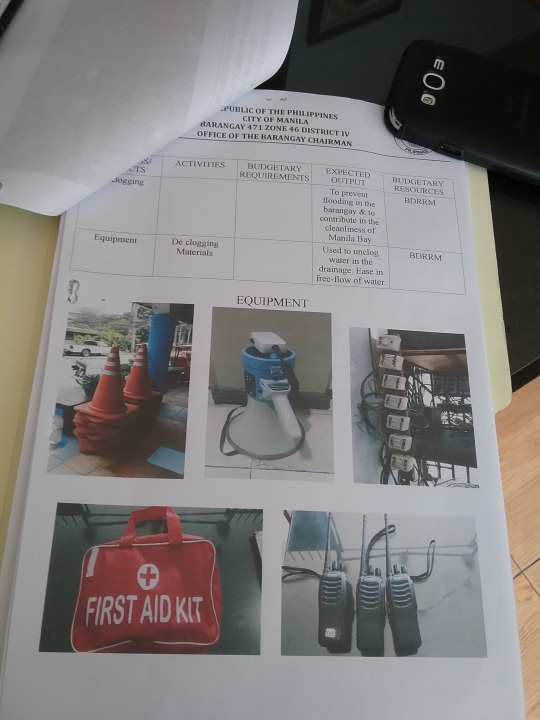
It is also relieving to know that on Wednesdays, they have a doctor on duty in the barangay to perform blood pressure monitoring as well as blood glucose monitoring and Ms. Lambanecio assists the doctor in these since she is a nurse. They extends their help further by referring the residents who were assessed to have high blood pressure or high blood glucose levels to the health center on Thursdays.
They also have their task force which is composed of their warning service leader, rescue evacuation service leader, disaster and supply leader, medical service leader, fire brigade leader, disaster control leader, information and communication service leader.
Maximizing their resources through using technology, in the form of Facebook group, as a platform for information dissemination is also commendable.
Lastly, they conduct earthquake drills every quarter and on an annual basis.
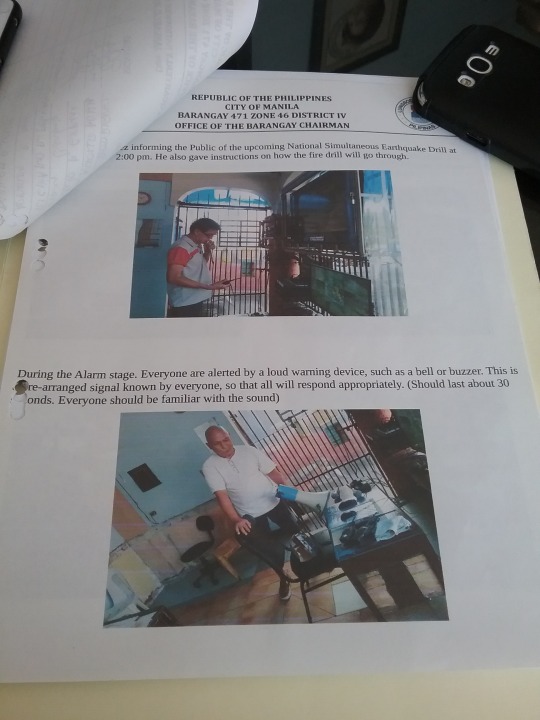
After my interview, I took a walk in the places near Barangay 471. There, I noticed that aside from fires, earthquakes, and typhoons, there can be places which can be sources of other hazards such as unsanitary streets where rodents and cockroaches can breed and infect the community.

In some streets, many cigarette butts are evident which can imply that despite policies which ban smoking in public places, especially in the case of the barangay wherein it is located near a campus, there are still smokers which can affect other people in the community through second-hand smoking diseases that they may get. ff
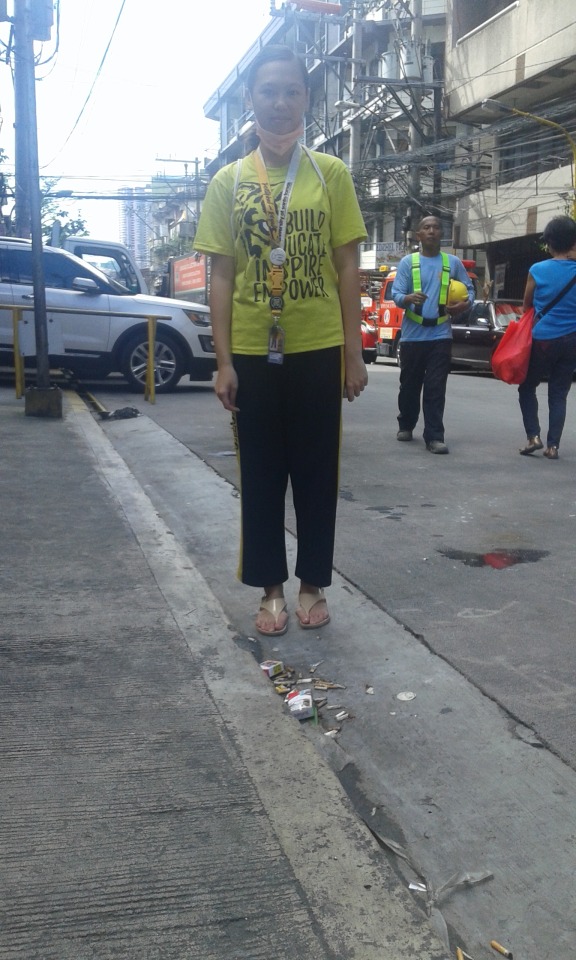
This reality is very much in contrast with the UST campus which is not only a conducive place for learning, but also a safe place in the community. As mentioned by Ms. Lambanecio, it provides an open space for residents during earthquakes. In addition to that, the enforcement of security within the vicinity is high which gives an assurance to the well-being of people in it. The school also has a denser collection of trees and plants than other areas in Manila, which in turn contribute to lessening greenhouse gases that contribute to global warming by absorbing carbon dioxide. With this, there is lesser pollution within the campus.

All of these led me to a realization. Based on my interview session with Ms. Lambanecio, they really put efforts on making the welfare of their residents sacrosanct. Actually, I can say that most parts of the government in the country in general has improved in terms of preparation for calamities. Municipalities suspend classes before the storms’ or typhoons’ landfall in their areas. We receive texts from the National Disaster Risk Reduction and Management Council, reminding us to be prepared always. These are all invested by our past experiences of tragic calamities such as Typhoon Ondoy and Yolanda, to name a few. But, if we as individuals don’t feel the need to cooperate with our government because of our greater inclination towards our own interests such as capitalization, then their efforts in the end may be futile.
We are not oblivious to the fact that there will always be people who complain about the government, raising eyebrows at every action of the government and raising suggestions about what must be done instead. Yes, the government is not perfect. There are shortcomings. But, maybe aside from just waiting for them to make an action, we must also be making our own actions too. They may conduct cleanup drives, like what Barangay 471 is doing, to lessen the effects of flooding during typhoons, but we should also help through actualizing our knowledge of where to place our trash. We know what to do. We should do something about what we know. We cannot stop disasters especially the natural ones. But we can always do something, even in our little ways to lessen their devastating effects.
1 note
·
View note